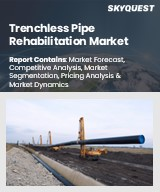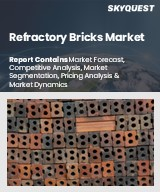
|
시장보고서
상품코드
1642858
시멘트 시장 규모, 점유율, 동향, 예측 : 유형별, 최종 용도별, 지역별(2025-2033년)Cement Market Size, Share, Trends and Forecast by Type, End Use, and Region, 2025-2033 |
||||||
시멘트 세계 시장 규모는 2024년 4,074억 3,000만 달러에 달했습니다. 향후 IMARC Group은 2033년에는 6,737억 6,000만 달러에 이르고, 2025-2033년 성장률 CAGR은 5.16%가 될 것으로 예측했습니다. 현재 아시아태평양이 시장을 독점하고 있으며 2024년 시장 점유율은 80.8%를 넘고 있습니다. 이 지역 시장은 주로 건설 활동의 활성화, 도시화의 진전, 인프라 프로젝트의 확대를 뒷받침하고 있습니다.
시멘트는 석회암, 점토 및 기타 재료의 융합을 포함한 복잡한 공정을 통해 제조되는 다목적 건축자재입니다. 이 원료는 분쇄되고 가마에서 고온으로 가열되어 클링커가 생성됩니다. 이 클링커를 미세하게 분쇄한 것이 시멘트입니다. 시멘트의 주성분은 규산칼슘과 알루민산염으로, 이것이 시멘트에 결합력을 부여하고 있습니다. 시멘트의 주요 장점 중 하나는 다양한 재료를 단단히 결합하여 내구성있는 구조를 만들 수 있다는 것입니다. 시멘트는 압축 강도가 뛰어나 기초나 벽 등의 내하중 구조에 이상적입니다. 또한 시멘트에는 포틀랜드 시멘트, 혼합 시멘트, 특수 시멘트 등의 유형이 있으며, 각각 다른 용도에 적합한 고유한 특성을 가지고 있습니다.
세계 시멘트 시장은 급증하는 인구와 급속한 도시화의 영향을 받고 있습니다. 또한, 도로, 다리, 공항 등의 인프라 프로젝트에 대한 정부의 이니셔티브와 투자가 시장 성장에 박차를 가하고 있습니다. 또한 소득 증가와 라이프스타일 변화에 따른 부동산 부문의 확대가 시장 성장을 뒷받침하고 있습니다. 이와 더불어 급속한 산업화와 제조업의 성장은 공장과 산업 구조물의 건설 시멘트 수요를 촉진하여 시장 전망을 더욱 밝게 하고 있습니다. 이에 따라 지속가능한 건설 관행에 대한 주목 증가와 녹색 건축자재의 채용이 시장 성장을 뒷받침하고 있습니다.
시멘트 시장 동향 및 촉진요인
인구 증가와 급속한 도시화
인구 증가와 도시화는 세계 시멘트 시장의 주요 촉진요인입니다. 세계 인구가 계속 확대됨에 따라 인프라와 주택에 대한 수요가 증가합니다. 급속한 도시화, 특히 개발도상국에서는 새로운 도시, 도로, 다리 및 기타 인프라 프로젝트의 건설이 필요하며, 모두 시멘트가 필요합니다. 이 원동력은 증가하는 인구에 대응하고 적절한 거주 공간과 노동 공간을 제공할 필요성에 의해 부추겨집니다. 또한 도시화는 종종 소득 증가와 라이프 스타일 변화로 이어져 주택과 상업용 건물에 대한 수요를 더욱 높여줍니다.
정부 이니셔티브 및 인프라 프로젝트에 투자
세계 각국의 정부는 경제 성장과 사회복지를 위해 인프라 정비가 중요하다는 것을 인식하고 있습니다. 도로, 고속도로, 철도, 공항 등의 교통망의 건설이나 개선에 많은 예산이 나뉘어져 있습니다. 이러한 노력에는 내구성과 신뢰성이 높은 인프라를 건설하기 위해 많은 양의 시멘트가 필요합니다. 또한 학교, 병원, 정수장 등 공공시설에 대한 투자도 시멘트 수요에 기여하고 있습니다. 인프라 개척에서 정부의 적극적인 역할은 안정적인 프로젝트 흐름을 보장하고 시멘트 제조업체와 공급업체에게 안정적인 시장을 제공합니다.
확장하는 부동산 부문
부동산 부문의 확장도 세계 시멘트 시장의 주요 촉진요인입니다. 경제가 성장하고 소득이 증가함에 따라 주택, 상업 공간 및 기타 부동산 수요가 증가합니다. 이로 인해 건설 활동이 급증하고 시멘트 수요가 증가합니다. 부동산 부문에는 주택, 상업, 산업 등 다양한 분야가 있습니다. 각 부문은 기초, 벽, 바닥 및 기타 구조 요소에 시멘트가 필요합니다. 또한, 도시화, 인구 증가, 라이프스타일의 변화는 현대적이고 미관적인 건물의 필요성을 높이고 시장 성장을 더욱 강화하고 있습니다. 특히 신흥 시장에서 부동산 부문의 지속적인 성장은 시멘트 제조업체와 공급업체에게 강력한 시장을 보장합니다.
목차
제1장 서문
제2장 조사 범위와 조사 방법
- 조사의 목적
- 이해관계자
- 데이터 소스
- 1차 정보
- 2차 정보
- 시장 추정
- 상향식 접근
- 하향식 접근
- 조사 방법
제3장 주요 요약
제4장 소개
- 개요
- 주요 업계 동향
제5장 세계 시멘트 시장
- 시장 개요
- 시장 실적
- 수량 동향
- 금액 동향
- COVID-19의 영향
- 가격 분석
- 주요 가격 지표
- 가격구조
- 마진 분석
- 시장 분석 : 지역별
- 시장 분석 : 유형별
- 시장 내역 : 최종 용도별
- 시장 예측
- SWOT 분석
- 개요
- 강점
- 약점
- 기회
- 위협
- 밸류체인 분석
- 채석 및 광업
- 1차 프로세서
- 제조업체
- 주요 건설 회사와 수출
- 소매점 및 백화점
- 최종 소비자
- Porter's Five Forces 분석
- 개요
- 구매자의 협상력
- 공급기업의 협상력
- 경쟁도
- 신규 참가업체의 위협
- 대체품의 위협
- 시장 성장 촉진요인과 성공 요인
제6장 주요 지역의 실적
- 아시아태평양
- 시장 동향
- 시장 예측
- 북미
- 시장 동향
- 시장 예측
- 유럽
- 시장 동향
- 시장 예측
- 라틴아메리카
- 시장 동향
- 시장 예측
- 중동 및 아프리카
- 시장 동향
- 시장 예측
제7장 유형별 시장
- 블렌드
- 시장 동향
- 시장 예측
- 포틀랜드
- 시장 동향
- 시장 예측
- 기타
- 시장 동향
- 시장 예측
제8장 최종 용도별 시장
- 주택
- 시장 동향
- 시장 예측
- 상업
- 시장 동향
- 시장 예측
- 인프라
- 시장 동향
- 시장 예측
제9장 경쟁 구도
- 시장 구조
- 주요 기업의 생산 능력
제10장 시멘트 제조 공정
- 제품 개요
- 상세한 프로세스 흐름
- 다양한 유형의 단위 조작
- 매스 밸런스와 원재료 요건
제11장 프로젝트의 상세·필요조건·비용
- 토지 요건과 비용
- 건설 요건과 비용
- 공장 레이아웃
- 공장의 기계
- 기계 사진
- 원재료 요건과 지출
- 원재료와 최종제품의 사진
- 포장 요건과 지출
- 운송 요건과 지출
- 유틸리티 요건과 지출
- 인원 요건과 지출
- 기타 설비투자
제12장 대출과 자금 지원
제13장 프로젝트의 경제성
- 프로젝트의 자본 비용
- 기술 경제적 파라미터
- 공급 체인의 각 단계에서의 제품 가격과 마진
- 과세 및 감가상각
- 수입 예측
- 지출 예측
- 재무 분석
- 이익 분석
제14장 주요 기업 프로파일
- China National Building Materials Group Corporation
- Holcim Ltd
- Anhui Conch Cement Co., Ltd.
- Jidong Development Group Co., Ltd.
- Heidelberg Materials
The global cement market size reached USD 407.43 Billion in 2024. Looking forward, IMARC Group expects the market to reach USD 673.76 Billion by 2033, exhibiting a growth rate CAGR of 5.16% during 2025-2033. Asia Pacific currently dominates the market, holding a market share of over 80.8% in 2024. This regional market is mainly propelled bolstering construction activities, amplifying urbanization, and growing infrastructure projects.
Cement is a versatile building material that is manufactured through a complex process involving the fusion of limestone, clay, and other materials. These raw materials are crushed and heated to high temperatures in a kiln, resulting in the formation of clinker. The clinker is then ground into a fine powder, which is known as cement. Cement consists mainly of calcium silicates and aluminates, which give it its binding properties. One of its key advantages is its ability to harden and bind various materials together, creating durable structures. It offers excellent compressive strength, making it ideal for the construction of foundations, walls, and other load-bearing elements. Moreover, cement comes in different types, such as Portland cement, blended cement, and specialty cement, each with unique properties suitable for different applications.
The global cement market is influenced by the burgeoning population and rapid urbanization. Moreover, government initiatives and investments in infrastructure projects, such as roads, bridges, and airports, is fueling the market growth. Furthermore, the expanding real estate sector, driven by rising incomes and changing lifestyles, is boosting the market growth. Besides this, rapid industrialization and the growth of the manufacturing sector drive the demand for cement in the construction of factories and industrial structures, further creating a positive outlook for the market. In line with this, the increasing focus on sustainable construction practices and the adoption of green building materials are supporting the market growth.
Cement Market Trends/Drivers:
Growing population and rapid urbanization
Population growth and urbanization are key drivers of the global cement market. As the world population continues to expand, the demand for infrastructure and housing increases. Rapid urbanization, particularly in developing countries, necessitates the construction of new cities, roads, bridges, and other infrastructure projects, all of which require cement. This driver is fueled by the need to accommodate the growing population and provide adequate living and working spaces. Additionally, urbanization often leads to higher incomes and changing lifestyles, further driving the demand for residential and commercial buildings.
Government initiatives and investments in infrastructure projects
Governments worldwide recognize the importance of infrastructure development for economic growth and social well-being. They allocate substantial budgets to build and improve transportation networks, such as roads, highways, railways, and airports. These initiatives require massive amounts of cement to construct durable and reliable infrastructure. Moreover, investments in public facilities like schools, hospitals, and water treatment plants also contribute to the demand for cement. The proactive role of governments in infrastructure development ensures a steady flow of projects, providing a stable market for cement manufacturers and suppliers.
Expanding real estate sector
The expanding real estate sector is another major driver of the global cement market. As economies grow and incomes rise, the demand for housing, commercial spaces, and other real estate properties increases. This leads to a surge in construction activities, which, in turn, drives the demand for cement. The real estate sector encompasses various segments, including residential, commercial, and industrial construction. Each segment requires cement for foundations, walls, floors, and other structural elements. Additionally, urbanization, population growth, and changing lifestyles contribute to the need for modern and aesthetically appealing buildings, further boosting the market growth. The continuous growth of the real estate sector, particularly in emerging markets, ensures a strong market for cement manufacturers and suppliers.
Cement Industry Segmentation:
Breakup by Type:
Blended
Portland
Others
Portland dominates the market
Portland cement dominates the market due to its excellent durability and strength characteristics, making it suitable for a wide range of construction applications. Its high compressive strength ensures long-lasting structures capable of withstanding heavy loads and adverse weather conditions. It offers versatility in terms of its composition, allowing for adjustments to meet specific project requirements. The precise control over its chemical and physical properties enables engineers and architects to tailor the cement mix for optimal performance. Additionally, Portland cement exhibits faster setting and hardening times compared to other cement types, reducing construction time and increasing efficiency. Its widespread availability and relatively lower cost compared to specialty cements further contribute to its dominance in the market.
Breakup by End Use:
Residential
Commercial
Infrastructure
Residential holds the largest share in the market
The residential segment holds the largest share in the market due to several key factors, such as the growing demand for housing, driven by population growth, rapid urbanization, and increasing disposable incomes. Residential construction projects, including single-family homes, apartments, and condominiums, contribute significantly to the overall cement market. Secondly, residential buildings require a substantial amount of cement for their foundations, walls, floors, and other structural components, which is acting as a significant growth-inducing factor. In confluence with this, cement's strength, durability, and versatility make it an ideal choice for constructing safe and long-lasting residential structures. Additionally, the renovation and remodeling activities in the residential sector is bolstering the market growth. Moreover, government initiatives and subsidies aimed at promoting affordable housing and infrastructure development in residential areas further drive the demand for cement in the residential construction sector.
Breakup by Region:
Asia Pacific
North America
Europe
Latin America
The Middle East and Africa
Asia Pacific exhibits a clear dominance, accounting for the largest cement market share
The report has also provided a comprehensive analysis of all the major regional markets, which include North America, Europe, Asia Pacific, Latin America, and the Middle East and Africa.
The Asia Pacific region holds the largest share in the global cement market. The region has a rapidly growing population, leading to increased urbanization and infrastructure development. The demand for housing, commercial spaces, and public infrastructure projects, such as roads, bridges, and airports, has been on the rise. As a result, there is a substantial need for cement in the construction sector.
Additionally, several countries in the Asia Pacific region, including China, India, and Japan, have witnessed significant economic growth over the years. This economic development has fueled the construction industry, driving the demand for cement. Moreover, the region is home to many emerging economies with a rising middle class and increasing disposable incomes. This, in turn, has led to a surge in housing and commercial construction activities, creating a substantial demand for cement. Furthermore, government initiatives promoting infrastructure development and urbanization, coupled with favorable investment policies, have attracted both domestic and foreign investments in the construction sector, contributing to the growth of the cement market in the Asia Pacific region.
Competitive Landscape:
The global cement market is highly competitive, characterized by the presence of major multinational corporations, regional players, and small-scale manufacturers. To maintain a competitive edge, companies in the cement market focus on strategies such as mergers and acquisitions, product innovation, and geographical expansion. Mergers and acquisitions allow companies to consolidate their market share, gain access to new technologies, and expand their customer base. Product innovation is another crucial aspect, with manufacturers investing in research and development to enhance the quality and sustainability of their cement products. Geographical expansion allows companies to tap into new markets and cater to the growing demand for cement in emerging economies. Moreover, sustainability has become a significant focus area for cement manufacturers. They are investing in eco-friendly practices and developing low-carbon cement solutions to reduce carbon emissions during production. Additionally, partnerships with construction companies and infrastructure developers play a crucial role in securing long-term contracts and maintaining a competitive position in the market.
The report has provided a comprehensive analysis of the competitive landscape in the market. Detailed profiles of all major companies have also been provided. Some of the key players in the market include:
China National Building Materials Group Corporation
Holcim Ltd
Anhui Conch Cement Co., Ltd.
Jidong Development Group Co., Ltd.
Heidelberg Materials
Key Questions Answered in This Report
- 1. What is cement?
- 2. How big is the global cement market?
- 3. What is the expected growth rate of the global cement market during 2025-2033?
- 4. What are the key factors driving the global cement market?
- 5. What is the leading segment of the global cement market based on the type?
- 6. What is the leading segment of the global cement market based on end use?
- 7. What are the key regions in the global cement market?
- 8. Who are the key players/companies in the global cement market?
Table of Contents
1 Preface
2 Scope and Methodology
- 2.1 Objectives of the Study
- 2.2 Stakeholders
- 2.3 Data Sources
- 2.3.1 Primary Sources
- 2.3.2 Secondary Sources
- 2.4 Market Estimation
- 2.4.1 Bottom-Up Approach
- 2.4.2 Top-Down Approach
- 2.5 Forecasting Methodology
3 Executive Summary
4 Introduction
- 4.1 Overview
- 4.2 Key Industry Trends
5 Global Cement Market
- 5.1 Market Overview
- 5.2 Market Performance
- 5.2.1 Volume Trends
- 5.2.2 Value Trends
- 5.3 Impact of COVID-19
- 5.4 Price Analysis
- 5.4.1 Key Price Indicators
- 5.4.2 Price Structure
- 5.4.3 Margin Analysis
- 5.5 Market Breakup by Region
- 5.6 Market Breakup by Type
- 5.7 Market Breakup by End-Use
- 5.8 Market Forecast
- 5.9 SWOT Analysis
- 5.9.1 Overview
- 5.9.2 Strengths
- 5.9.3 Weaknesses
- 5.9.4 Opportunities
- 5.9.5 Threats
- 5.10 Value Chain Analysis
- 5.10.1 Quarrying/Mining
- 5.10.2 Primary Processors
- 5.10.3 Manufacturers
- 5.10.4 Large Construction Firms and Exports
- 5.10.5 Retailers and Departmental Stores
- 5.10.6 End-Consumers
- 5.11 Porter's Five Forces Analysis
- 5.11.1 Overview
- 5.11.2 Bargaining Power of Buyers
- 5.11.3 Bargaining Power of Suppliers
- 5.11.4 Degree of Competition
- 5.11.5 Threat of New Entrants
- 5.11.6 Threat of Substitutes
- 5.12 Key Market Drivers and Success Factors
6 Performance of Key Regions
- 6.1 Asia Pacific
- 6.1.1 Market Trends
- 6.1.2 Market Forecast
- 6.2 North America
- 6.2.1 Market Trends
- 6.2.2 Market Forecast
- 6.3 Europe
- 6.3.1 Market Trends
- 6.3.2 Market Forecast
- 6.4 Latin America
- 6.4.1 Market Trends
- 6.4.2 Market Forecast
- 6.5 Middle East and Africa
- 6.5.1 Market Trends
- 6.5.2 Market Forecast
7 Market by Type
- 7.1 Blended
- 7.1.1 Market Trends
- 7.1.2 Market Forecast
- 7.2 Portland
- 7.2.1 Market Trends
- 7.2.2 Market Forecast
- 7.3 Others
- 7.3.1 Market Trends
- 7.3.2 Market Forecast
8 Market by End-Use
- 8.1 Residential
- 8.1.1 Market Trends
- 8.1.2 Market Forecast
- 8.2 Commercial
- 8.2.1 Market Trends
- 8.2.2 Market Forecast
- 8.3 Infrastructure
- 8.3.1 Market Trends
- 8.3.2 Market Forecast
9 Competitive Landscape
- 9.1 Market Structure
- 9.2 Production Capacities of Key Players
10 Cement Manufacturing Process
- 10.1 Product Overview
- 10.2 Detailed Process Flow
- 10.3 Various Types of Unit Operations Involved
- 10.4 Mass Balance and Raw Material Requirements
11 Project Details, Requirements and Costs Involved
- 11.1 Land Requirements and Expenditures
- 11.2 Construction Requirements and Expenditures
- 11.3 Plant Layout
- 11.4 Plant Machinery
- 11.5 Machinery Pictures
- 11.6 Raw Material Requirements and Expenditures
- 11.7 Raw Material and Final Product Pictures
- 11.8 Packaging Requirements and Expenditures
- 11.9 Transportation Requirements and Expenditures
- 11.10 Utility Requirements and Expenditures
- 11.11 Manpower Requirements and Expenditures
- 11.12 Other Capital Investments
12 Loans and Financial Assistance
13 Project Economics
- 13.1 Capital Cost of the Project
- 13.2 Techno-Economic Parameters
- 13.3 Product Pricing and Margins Across Various Levels of the Supply Chain
- 13.4 Taxation and Depreciation
- 13.5 Income Projections
- 13.6 Expenditure Projections
- 13.7 Financial Analysis
- 13.8 Profit Analysis
14 Key Player Profiles
- 14.1 China National Building Materials Group Corporation
- 14.2 Holcim Ltd
- 14.3 Anhui Conch Cement Co., Ltd.
- 14.4 Jidong Development Group Co., Ltd.
- 14.5 Heidelberg Materials



















